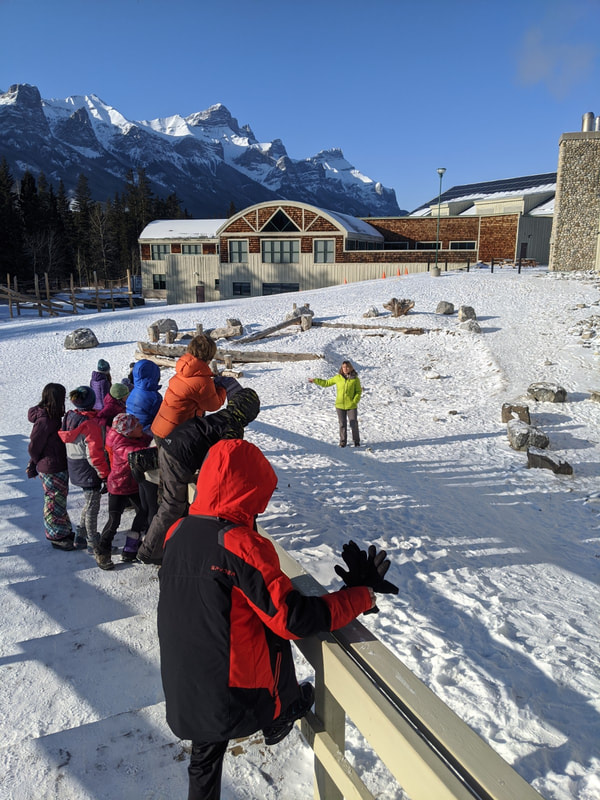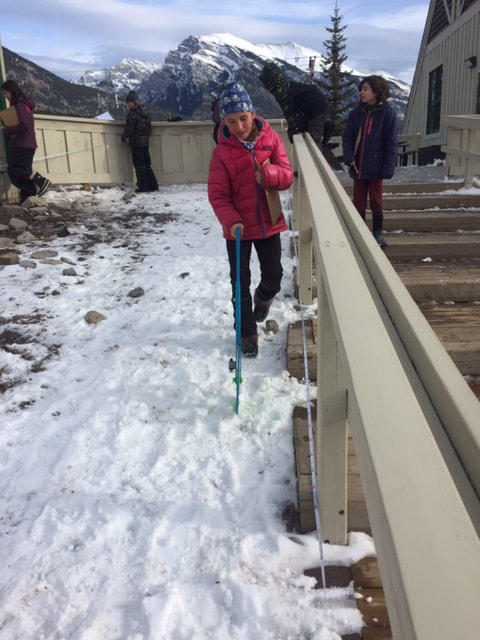Alpenglow School
|
The Nature Immersion Program has teamed up with the Playground Committee to help facilitate student involvement in the design and ultimately the production of play elements for the schoolyard. What a fun project! The teaching technique we’re implementing is called ‘design thinking’ and it is a process for creative and collaborative problem solving. We’ve also linked this project work with the grade 5/6 math curriculum.
The grade 5/6 class began by looking at the playground space designated for them to design. They diligently measured this space using a variety of tools and then transferred the information onto graph paper. There was some great hands-on, real world math going on here. The students then went indoors and started to brainstorm possibilities. They built miniature 3D models of this space through the use of small “loose parts” objects. I was blown away by their designs and ability to think spatially (see the attached photos for detail). The class gathered more information about the project by walking the schoolyard with ACES’ fundraising coordinator. She detailed the next phase of the playground construction project scheduled for next summer and helped the class consider the opportunities (like a budget) and constraints (like safety considerations). The students also dug deeper into the design process with the construction and design thinking teacher from Banff High School. They discussed what ‘mindsets’ are important for a successful design project (such as learning from failure, embracing uncertainty, and being optimistic). After completing another sketch of their playground design the class voted (using a process called ‘Dotmocracy’) to help choose, as a class, what playground elements they’d like to build. The grade 5/6 class then stepped back in the process a bit, to define the problem more clearly: How might we design suitable outdoor play spaces on the playground for the youngest students of Alpenglow? This phase of the project had the students empathizing with the kindergarten kids. They had to really consider these students, their play needs, and their unique specifications. Ms.Lea also had the students engage directly with the kindergarten students, they asked them questions, measured them and recorded this data to help build their prototype designs. The prototyping continues with the building of cardboard mud kitchens (one of the design elements decided on) with Ms.Lea before the holiday break. This work will continue in the new year. There is a build day scheduled for the end of January and then we’ll see where the project takes us next. I’m most grateful to be involved in helping with this meaningful outdoor project for our school and to help create authentic and engaging learning opportunities for our students. 4/29/2022 08:22:23 pm
What an exquisite article! Your post is very helpful right now. Thank you for sharing this informative one. Comments are closed.
|
Nature-Based Learning is a main pillar of learning at Alpenglow SchoolFollow our students and teachers as they take their classrooms outside to explore, connect and learn in our own natural environment. Archives
December 2019
Categories |












 RSS Feed
RSS Feed
